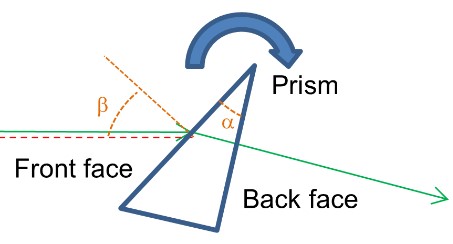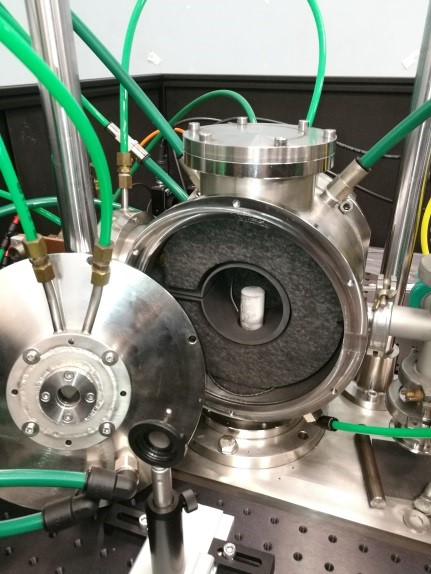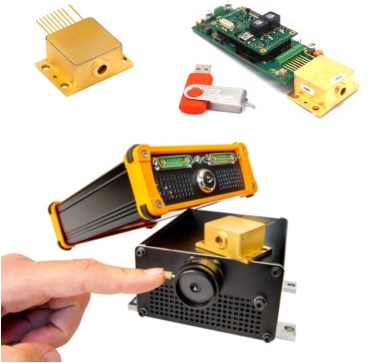
Johan Petit’s QCL Material Characterization Project
Johan Petit is a French research engineer at ONERA, the French aerospace lab, researching material characterization. In 2022, his project was to calculate the transparency and refractive index of a material using a prism for different infrared wavelengths of light from the mid-infrared (MWIR) to the long-wave infrared (LWIR) range or from approximately 3µm to 12µm.
Understanding Refractive Index and Material Transparency
The refractive index of a material is a number that describes how fast a light beam travels through that material, and it is essential to know that number for several applications. In his setup, Johan shines a laser on a prism and rotates the prism until the reflected beam (on the back face of the prism) is collinear with the incident beam. When this is the case, Johan can easily calculate the refractive index from ![]() and
and ![]() angles (see fig. a).
angles (see fig. a).

Since the temperature of a material will change the refractive index of that material, Johan had to account for this in his characterization. Therefore, the setup’s environment can be modified, allowing characterization to be performed up to 1000°C and beyond if the material to be tested is subject to temperature changes under intended operating conditions.
Problem: Sourcing a Useful and Affordable Laser Source
For his experiment, Johan hoped he could source some low-cost laser diodes. However, he soon discovered that laser diodes in the MWIR range and beyond are not commercially available. So, through some research, Johan started sourcing a broadly tunable quantum cascade laser (QCL), with a tuning range of several microns, providing him with the necessary wavelengths for his testing. However, suitable devices were relatively expensive compared to budget.
Solution: Benefits of Single-Wavelength QCL Material Characterization
mirSense, a manufacturer of QCLs in France, was able to provide Johan with single-wavelength QCLs for about one-fifth the cost of the tunable QCL. These compact QCLs operate at room temperature, providing efficient laser sources without the need for bulkier cooling systems. This, in combination with the plug-and-play turnkey version he chose, made the entire setup easier, cheaper, and cost significantly less real estate in the lab.
Given the options available, it seems clear that QCLs are the ideal laser source when you want MWIR to LWIR emission, room temperature operation, and compact, turnkey usability for QCL material characterization.


RPMC Lasers is the leading OEM laser supplier in the US, focused on providing diode lasers, CW and pulsed lasers, laser amplifiers, and laser accessories to the industrial, medical, life science, and defense markets. Our technical staff has a vast understanding of lasers, the laser industry, and hands-on experience, making them a valuable resource in selecting the best laser for an application, whether a standard laser or a custom solution. Contact Us with the button below or email us at info@rpmclasers.com!
Have questions?

 SHIPS TODAY
SHIPS TODAY 